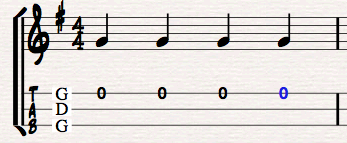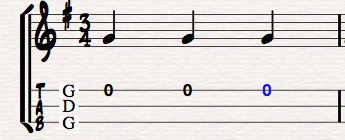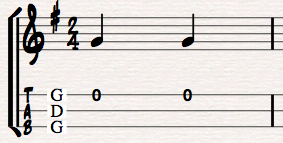Here we talk about counting music in different ways.
When you're counting a beat you won't always find the strong one on every fourth beat.
Common Time

So far we've been talking about music with a time signature of 4/4, also called common time. This means that the music has 4 counts in every bar and each count is a quarter note, or crotchet. For our purposes it just means that there are 4 beats to the bar. There are other ways of counting as well.
Waltz time
A waltz is in 3/4 and has 3 beats to the bar, 1 2 3 1 2 3 1 2 3.
March Time

A march has 2 beats to the bar and is in 2/4., we count 1 2 1 2 1 2.
Music that uses these time signatures will divide their beats in half, like in the previous lesson. They can also divide those notes in half, and further again so beats are divided into 2, 4, 8 etc. They are called simple time signatures.
Compound Time

Compound time signatures divide beats into multiples of 3. For example 12/8 times count 1,2,3 4,5,6 7,8,9 10,11,12 and every count is a quaver or eighth note. It also has 4 beats in every bar but now we're dividing them into 3.
Blues is full of songs in 12/8. Listen for that classic Elmore James intro in Dust My Broom, all those Robert Johnson intros, it's everywhere.
When we talk about 'groove' or 'feel' we're really talking about time signature and beat subdivision.
